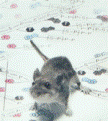Papers in the Biological Sciences

Jay F. Storz Publications
Document Type
Article
Date of this Version
5-2010
Abstract
The α- and β-globin gene families of jawed vertebrates have diversified with respect to both gene function and the developmental timing of gene expression. Phylogenetic reconstructions of globin gene family evolution have provided suggestive evidence that the developmental regulation of hemoglobin synthesis has evolved independently in multiple vertebrate lineages. For example, the embryonic β-like globin genes of birds and placental mammals are not 1:1 orthologs. Despite the similarity in developmental expression profiles, the genes are independently derived from lineage-specific duplications of a β-globin pro-ortholog. This suggests the possibility that other vertebrate taxa may also possess distinct repertoires of globin genes that were produced by repeated rounds of lineage-specific gene duplication and divergence. Until recently, investigations into this possibility have been hindered by the dearth of genomic sequence data from nonmammalian vertebrates. Here, we report new insights into globin gene family evolution that were provided by a phylogenetic analysis of vertebrate globins combined with a comparative genomic analysis of three key sauropsid taxa: a squamate reptile (anole lizard, Anolis carolinensis), a passeriform bird (zebra finch, Taeniopygia guttata), and a galliform bird (chicken, Gallus gallus). The main objectives of this study were 1) to characterize evolutionary changes in the size and membership composition of the α- and β-globin gene families of tetrapod vertebrates and 2) to test whether functional diversification of the globin gene clusters occurred independently in different tetrapod lineages. Results of our comparative genomic analysis revealed several intriguing patterns of gene turnover in the globin gene clusters of different taxa. Lineage-specific differences in gene content were especially pronounced in the β-globin gene family, as phylogenetic reconstructions revealed that amphibians, lepidosaurs (as represented by anole lizard), archosaurs (as represented by zebra finch and chicken), and mammals each possess a distinct independently derived repertoire of β-like globin genes. In contrast to the ancient functional diversification of the α-globin gene cluster in the stem lineage of tetrapods, the physiological division of labor between early- and late-expressed genes in the β-globin gene cluster appears to have evolved independently in several tetrapod lineages.
Supplementary data for Figure 4


Comments
Published in Molecular Biology and Evolution 27:5 (May 2010), pp. 1126–1138; doi: 10.1093/molbev/msp325 ; PMCID: PMC2877528 Copyright © 2010 Federico G. Hoffmann, Jay F. Storz, Thomas A. Gorr, and Juan C. Opazo. Published by Oxford University Press on behalf of the Society for Molecular Biology and Evolution. Used by permission.